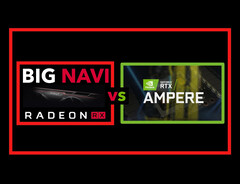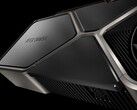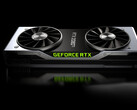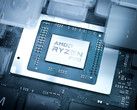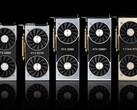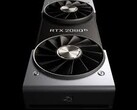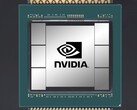Youtuber Moore’s Law Is Dead has recently updated his previous Ampere vs RDNA2 rumor roundup. The latest information comes from unnamed AMD and Nvidia insiders, and the youtuber is confident about the accuracy, but we still recommend a grain of salt here and there. Long story short, it looks like AMD could snag the gaming GPU performance crown from Nvidia this year.
Moore’s Law is Dead is reporting that Nvidia’s arrogance in forcing TSMC’s hand is going to cost them the performance crown this year. Apparently, TSMC was not able to meet Nvidia’s production demands and so Nvidia needed to tap Samsung’s 8 nm nodes for most of its gaming GPUs launching this year. Now, Samsung’s 8 nm nodes are mostly improved 10 nm nodes so they are not actually 1 nm behind TSMC, which clearly gives AMD’s RDNA2 GPUs manufactured on the 7 nm EUV process at TSMC the superior position. Therefore, more and more Nvidia insiders are concerned about AMD’s ‘Big Navi” GPUs.
The youtuber has also received updated specs for a July GA102 engineering sample card. Some of the specs are unchanged from his previous reports, but there are others that appear to be modified. Here is a quick list of all the revised engineering sample specs and performance figures:
- Comes with the unusual three-fan design
- 12-pin power connector instead of dual 8-pin
- >300 W TGP at stock clocks
- Decent OC potential, could reach 400 W TGP
- 12 GB VRAM - 18 Gbps bandwidth, 5376 CUDA Cores
- 2 GHz base clock, 2.2 GHz OC
- 40% faster rasterization performance in 4K
- 3-4X ray tracing performance gains with solid IPC increase over RTX 2080 Ti
- NVCache still included - leverages DDR and SSD speeds to boost GDDR6 bandwidth
- DLSS 3.0 could launch with RTX 3000 and be on by default, forcing reviewers to use it when directly comparing results with AMD’s RDNA2 GPUs
All Ampere gaming GPUs launching this year may end up coming from Samsung’s 8 nm foundries. Apparently there already are 7 nm TSMC samples, but TSMC can only meet production demands by 1H 2021, so we may see a 7 nm “Super” refresh for the RTX 3000 cards next spring. However, AMD is rumored to be moving to 5 nm next year, so Nvidia might enjoy the performance crown for less than half a year.
As far as estimated performance figures go, the AMD RDNA2 GPUs are now expected to integrate 72 compute units with 20% higher clocks leading to 195%-225% performance increase over the current Radeon RX 5700 XT. This translates to ~50% better performance when compared to the Nvidia RTX 2080 Ti. Nvidia, on the other hand, is estimating that the RTX 3080 Ti would be only ~40% faster than the RTX 2080 Ti, while the RTX 3070 Ti would match the RTX 2080 Ti, and the RTX 3070 could be as fast as the RTX 2080 Super. Curiously enough, the AMD insiders are not completely convinced that Big Navi is faster than the RTX 3080 Ti.


